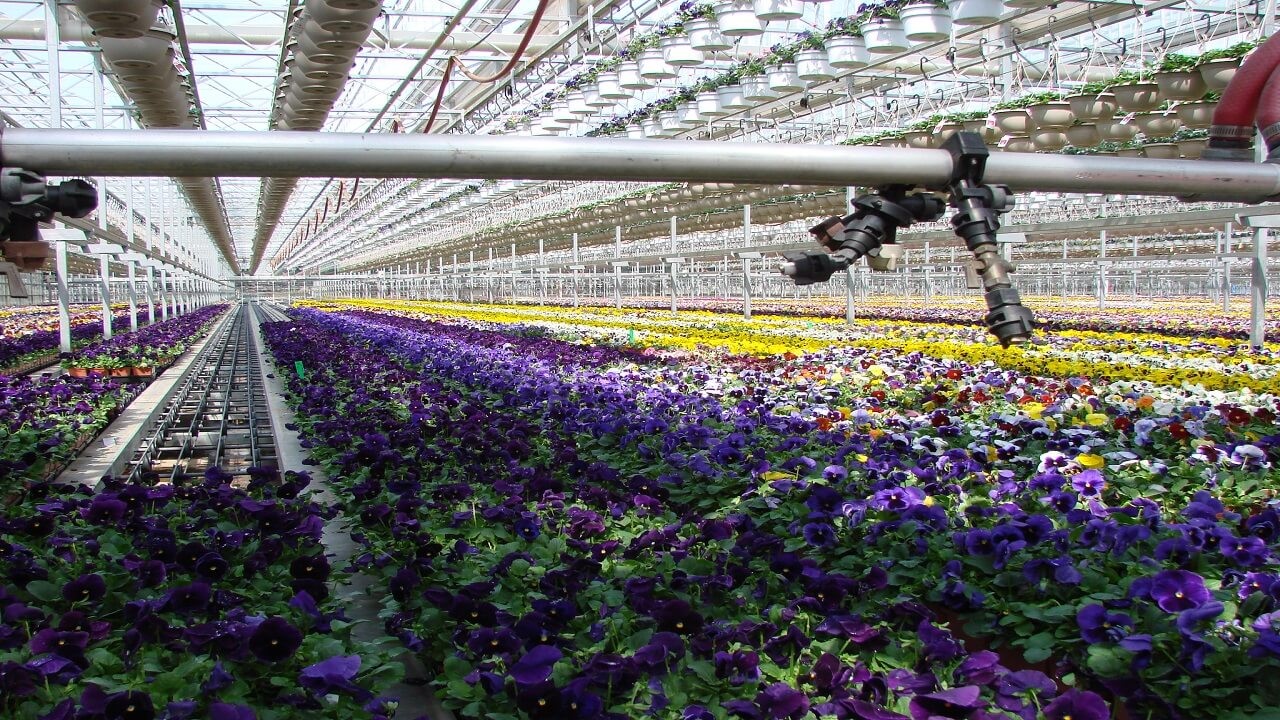
Water Management in Greenhouse Farming
October 2, 2023, 2:11 pm
Water management in greenhouse farming is a major factor in successful production of greenhouse plants.
Water Management in Greenhouse Farming
An adequate water supply is needed for irrigation, pesticide application, evaporative cooling (if applicable), growing media preparation and clean-up.
Plants require an adequate supply of moisture for optimum growth which is affected by many variables. The amount of water needed depends on the area to be watered, crops grown, weather conditions time of year and the environment control system. The design for the water supply needs to be made for the peak use time of the year. A rule of thumb is to have available 1.13 to 1.5 litres per square foot of growing area per day as a peak use rate for the warmest day.
Water Management in Greenhouse Farming
For example a 30 feet x 100 feet greenhouse with 200 square meters of benches would require a peak use rate of 2,720 to 3,600 litres/day. The following factors can increase or decrease the amount of water needed:
Solar radiation. The level of radiation that reaches the plants is reduced by 10% to 40% due to the glazing and the structural members in the greenhouse. This reduces the transpiration.
Shading. The use of shading outside or inside will reduce the radiation level on the plants. Depending on the level of shade, this will reduce evapotranspiration and therefore water needs.
Air movement. Fan ventilation and HAF (horizontal air flow) systems increase the rate of evapotranspiration. Depending on location and nearby greenhouses or other buildings, sidewall vents and open-roof designs can also have an influence. An 8 kilometres/hour wind can increase evapotranspiration by 20%.
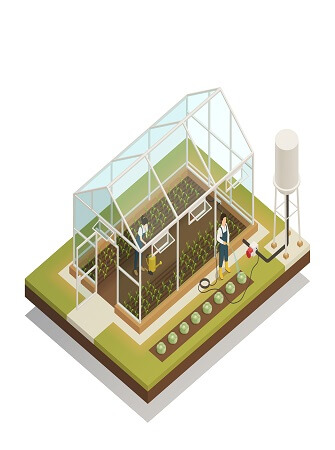
Type and size of the plants. Seedlings or small potted plants require less water than a full-grown tomato or cucumber crop. A large root mass or heavy leaf canopy will increase water needs.
Type of irrigation system. Only 20% of the irrigation water applied with an overhead sprinkler system may reach the soil in a potted plant crop with a large foliar canopy. Inpot drips systems are much more efficient as all the water applied with an in-pot drip system gets to the soil. Sub-irrigation systems such as ebb and flood systems, flooded floors and hydroponics conserve water by recycling and reusing the excess water.
Leaching. Traditionally, the recommendation that at least 10% of the water applied be allowed to leach out to remove excess fertilizer salts increases water usage. Often leaching accounts for a much higher percentage and can increase water needs significantly. The type of growing mix used also affects the amount of water holding capacity and therefore the frequency of watering.
Extending a limited water supply
Water supplies can be extended by several methods. Most common is adapting low usage irrigation systems. Zoning, applying the water to one area or section of plants at a time, will allow a low flow water source to irrigate a larger number of plants. Zones can be sized to utilize the flow from a well or municipal source so that irrigation takes place all day long.

Low flow wells can be set up to be pumped to a storage tank over a many hours. Water from the tank is then used to irrigate plants during the daylight hours.
Collection of rainwater to supplement a well or surface system is also possible. This works best with a gutter-connected greenhouse where the water from the downspouts is piped to an above ground or below ground storage tank.
From a conservation standpoint, keeping the piping system in good repair is important. A leak of one drop per second wastes over 427 liters of water per month.
Greenhouse Farming Water Sources
Characteristics of irrigation water that define its quality vary with the source of the water. There are regional differences in water characteristics, based mainly on geology and climate.
There may also be great differences in the quality of water available on a local level depending on whether the source is from above ground (rivers and ponds) or from groundwater aquifers with varying geology, and whether the water has been chemically treated. Municipal system water and deep wells generally provide the best water source for greenhouse operations.
Chemical treatment of water may be required when pollutants such as iron, sodium, dissolved calcium and magnesium or bicarbonates are present. Surface water such as ponds and streams may have more particulate matter such as suspended soil particles, leaves algae or weeds that needs to be filtered out.
The main sources for irrigation water are groundwater from wells, surface water, drainage ponds, rain and municipal water.
Drilled wells are a clean source of water for many greenhouse operations however, the water yield from drilled wells is usually limited. Groundwater is found in aquifers that are located below the earth surface. As rainfall occurs, some of it evaporates, some of it is removed by plant transpiration and the remaining water filters down through the topsoil and flows into sand, gravel and fractured rock. It reaches a depth where all the pore spaces are filled. This saturated zone is called the aquifer.
The flow of water from a well depends on the permeability and size of the aquifer, its recharge area and the amount of rainfall. A well in one location may provide a very low yield, while another area, may provide a high water yield. In most areas, well drillers keep an accurate record of the depth and yield of wells they drill. Groundwater quality varies due to the parent material.
Even for one site, the location and depth of the well can have an important effect on water quality. Elemental content and bicarbonate levels can also change with the seasons of the year, and the amount of pumping from the wells.
Surface water includes streams, rivers, lakes and ponds which are dependent on runoff from adjacent land or from ground water springs. These are dependent on rainfall rates that vary from year to year.
Surface water is subject to contamination from sources such as sediment, chemicals and plant growth. High levels of particles can reduce the life of pumps and clog irrigation systems and multiple filters may be required. It is also possible that surface waters can become contaminated with road salt, industrial, agricultural chemicals, algae and plant pathogens.
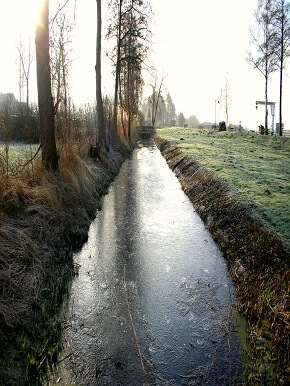
Drainage ponds are usually a combination of rain water and run-off. Drainage ponds commonly contain fertilizers or other agricultural chemicals. Because of the size and lack of aeration, biological conditions such as algal growth may be a concern.
Rain water can be collected from greenhouses or building roofs without contacting the ground and held in a concrete cistern, fiberglass or polyethylene tank, water silo or other holding tank. It is clean except for any debris that gets into the system. Rain water will be very low in elemental or chemical contamination unless there is industrial air pollution or fallout on the roofs.
The pH of collected rain may be low (4.0 – 5.0) but is not considered detrimental to crops because it is not buffered (does not resist change in pH) and changes readily. Rain water is an excellent and underutilized source of irrigation water.
A 1inches rainfall on an acre of greenhouse amounts to 102,585 liters. A common yield is about 65% with losses due to evaporation, wind, leakage of piping system and diversion of the first few minutes of the rainfall to remove debris. To calculate the quantity in liters that can be collected, multiply the square feet of greenhouse building floor (footprint) by 0.4.
A basic system consists of a storage tank, roof washer, inflow pipes, overflow pipes and a diverter to redirect the excess water when the tank is full. Concrete or plastic tanks can be used but are usually limited to about 56,781 liters. Corrugated steel tanks can be built to almost any capacity as they are delivered in preformed panels and assembled on site.
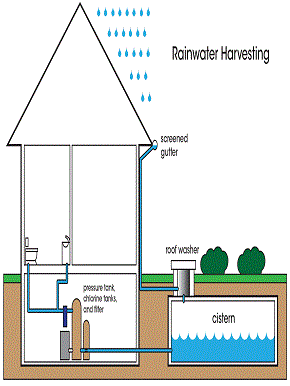
Before the water is collected for irrigation, a device called a roof washer is normally used to divert the first flush of water that is collected to remove debris from the water. Also an overflow is needed to handle excess water. The excess water is diverted to a drainage area where it will not flood neighbouring property. Once rainwater is collected, it can be distributed to the greenhouses through the normal irrigation system.
PROTECTING GREENHOUSE GROUNDWATER FROM CONTAMINATION
Protect Your Water Supply: One of the areas most sensitive to contamination is the immediate source of water which enters your operation. This may be the private wellhead or the water line(s) which carry public water. Wells provide a direct entry point for pollutants to the groundwater. Pesticide and fertilizer mixing and storage should take place away from the wellhead to reduce the chance of contamination. This is particularly important for shallow wells and those in sandy soils. Most liquid pesticide labels now contain a chemigation provision that details system requirements.
Backflow Preventers: All potable water must be protected against backflow to ensure that contaminated water is not mixed with that used for human consumption. Backflow or back-siphoning occurs when a negative pressure develops in the water supply line, causing water that has been contaminated to be drawn back into the supply lines. Examples of this are a hose that fills a spray tank or barrel, a fertilizer injector, or an equipment wash tub. Backflow preventers should be installed when chemicals are injected into the irrigation water regardless of source.

GREENHOUSE FARMING WATER ANALYSIS
Many factors taken together determine the quality of water for irrigation of plants. The chemical constituents of irrigation water can affect plant growth directly through toxicity or deficiency, or indirectly by altering plant availability of nutrients.
Water Analysis
Once the source of water is identified, water to be used for irrigation should be tested by a reputable laboratory to determine the quality of the water to be used for irrigation, to aid in the choice of fertilizers for optimum plant growth, and to minimize the risk of discharging pollutants to surface or ground water.
Prior to new construction, potential irrigation water should be tested. Monthly analysis is recommended for new water sources. Existing greenhouse operations should monitor water quality at least twice a year (rainy and dry seasons); more frequent monitoring is needed to alter production practices in response to changes in water quality.
Collecting a Water Sample
When collecting a water sample, run the water at full flow for five minutes before collecting 0.5liters of water in a tightly sealed plastic bottle. For best results, fill a clean 20 litres bucket with water and submerge the sample bottle, then seal with the cap under water. Do not use metal lids. The bottle should be totally full with no air space remaining.
Testing by Laboratories
Analysis for inorganic elements should include electrical conductivity (soluble salts), pH, alkalinity, nitrate nitrogen, ammonium nitrogen, calcium, magnesium, sodium, potassium, phosphorus, zinc, copper and aluminium.
Testing water for pesticides, herbicides or fuel oil is very expensive, particularly if the contaminant is unknown.
Analysis for biological or disease organisms is not generally recommended since many plant pathogens are always present in water at some level
If you would like to start greenhouse farming in Nigeria and you need a greenhouse farming business plan or consultation service, please send a mail to agsolutions@agricdemy.com
With our greenhouse farming business plan, you will learn:
- The different greenhouse sizes available and the materials required to build them
- The different fruits and vegetables you can grow in the greenhouse and their yields
- The cost of building and constructing a greenhouse based on the size you want
- Profit and loss estimates for the first three years of running one unit of greenhouse
- Vegetable and fruit market analysis in Nigeria
- Marketing and sales strategy for running a successful greenhouse in Nigeria
- Personnel required to operate your greenhouse, key milestones and so much more!
Our greenhouse farming business plan costs $35 or N50,000. To make payment offline and get our greenhouse farming business plan, send a mail to agsolutions@agricdemy.com
If you want to learn more about greenhouse farming, check out these articles in our Greenhouse Farming section and watch our Greenhouse Farming video tutorials.
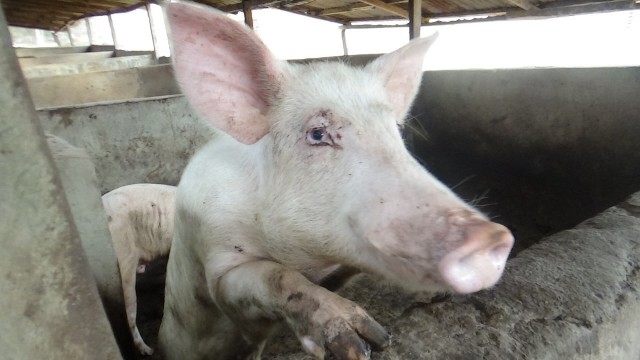

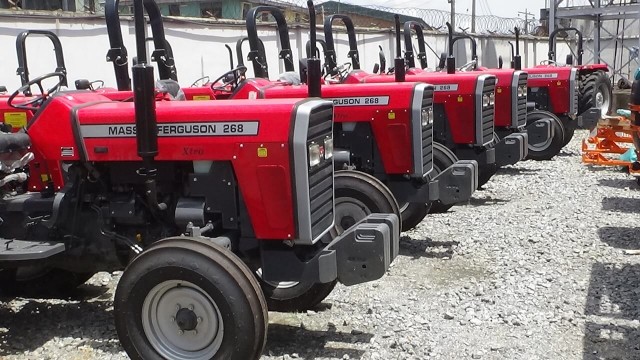


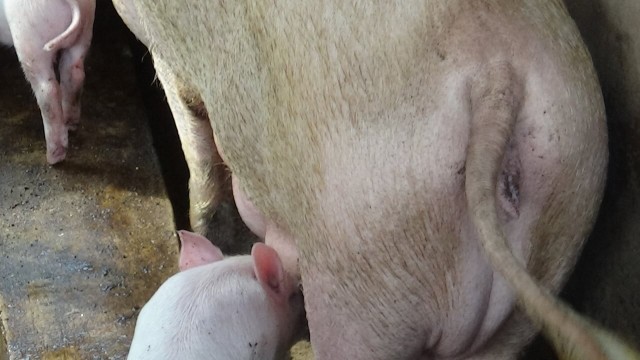
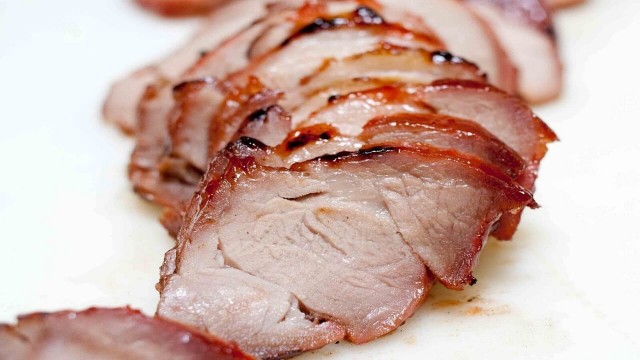

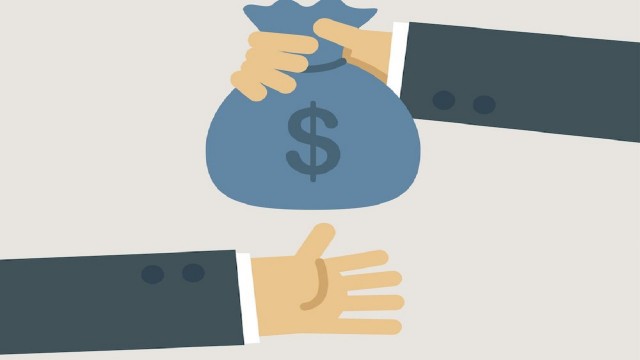
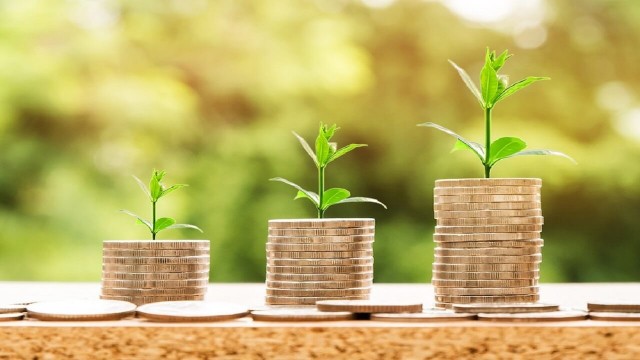
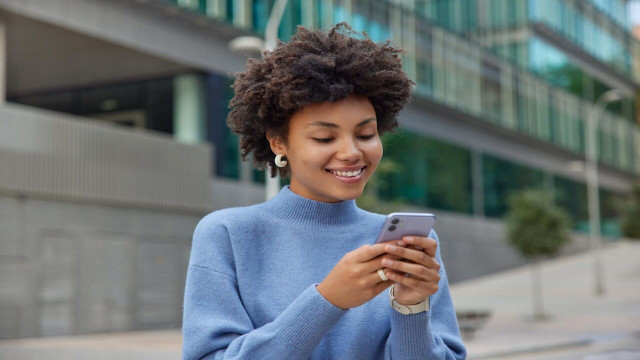

Share This Article: